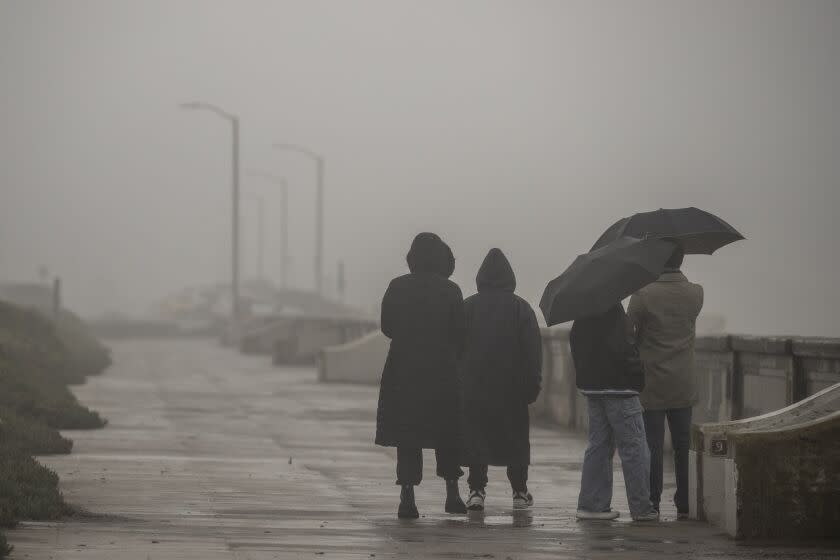Bay Area reels from storm damage as it braces for 'brutal' atmospheric river

Along the narrow river that separates San Mateo and Santa Clara Counties — south of the city along the peninsula — residents braced themselves for the incoming storm, still reeling from Saturday’s deluge.
On New Year’s Eve, the typically dry creek swelled over its banks, flooding patios, streets, parking lots and stores throughout East Palo Alto, Palo Alto and Menlo Park — including the entrance of Menlo Atherton High School’s Performing Arts Center.
At the Chaucer-Pope Bridge, a small, two-lane bridge connecting Menlo Park and Palo Alto, water rose to levels just inches shy of its 24-foot capacity. The volume of water moving through the creek on Stanford University’s property — at 7,420 cubic feet per second — exceeded the 1998 record of 7,200.
On Tuesday, work crews and residents were out preparing for the next storm. Rowen Lee was shoveling sand from a pile on Palo Alto Avenue into bags, which she and her family then carried across the street to their Palo Alto house, which was flooded Saturday. She said they were alerted to the flood risk only 30 minutes before the creek spilled over.
“It got into our garage,” she said, but the rest of the house was spared. Houses built right up to the creek’s edge looked precarious Tuesday afternoon — teetering atop cliffs showing smooth sedimentation where water had climbed just a few days ago.
Dana Shields lives on the Menlo Park side of the creek.
Her house is one foot above the flood zone, and on Saturday she watched as water spilled into her neighbors’ yards and driveways.
As the emergency response coordinator for her neighborhood — an informal, voluntary community-based position — she helped enlist other neighbors to help bring in sand bags and shovel water out of driveways and yards.
“I’m not looking forward to tomorrow,” she said, worrying things could get worse.
Fallen trees and debris clogged bridges along the creek, including some smaller conveyances upstream on Stanford University’s property.
The Bay Area is now bracing for another powerful storm that will hit Wednesday and Thursday.
"This is truly a brutal system that we are looking at and needs to be taken seriously," the National Weather Service said. “Threat to life likely during this storm."
San Francisco Mayor London Breed warned residents that the incoming storm could get really bad.
“We were under the impression we could anticipate not even an inch of rain,” before the New Year's Eve deluge, she said.
Instead, the city received 5.5 inches, “the second largest amount of rain in a 24-hour period.”
She said the city hadn’t been prepared, but reacted swiftly and broadly — cleaning storm drains, providing sandbags, and addressing downed trees, mudslides and flooding.
“It was so out of range, but we were still able to respond,” she said.
She said meteorologists are now anticipating 2-3 inches of rain with this coming storm, along with winds of 20-30 mph and gusts exceeding 50 mph.
She urged people to use 911 only for life and death emergencies.
Both she and Mary Ellen Caroll, the city’s executive director of the Department of Emergency Management, said people should call 311 for flooding and other non-life-threatening situations.
Stanford’s Lake Lagunita, which has been dry for years, was partially filled as a result of the New Year's Eve storm.
Geese and ducks swam and congregated in the shallow water.
Cities across the peninsula are providing sandbag pickups for residents, while urging people to stay home and keep street gutters clean as the storm moves in early Wednesday morning.
On social media sites such as Nextdoor, many recalled the flood of 1998, which submerged large swaths of Palo Alto and Menlo Park — including a section of Highway 101. Schools were closed for two days as the small, tech-centric cities along the peninsula bailed water and made repairs.
This story originally appeared in Los Angeles Times.

